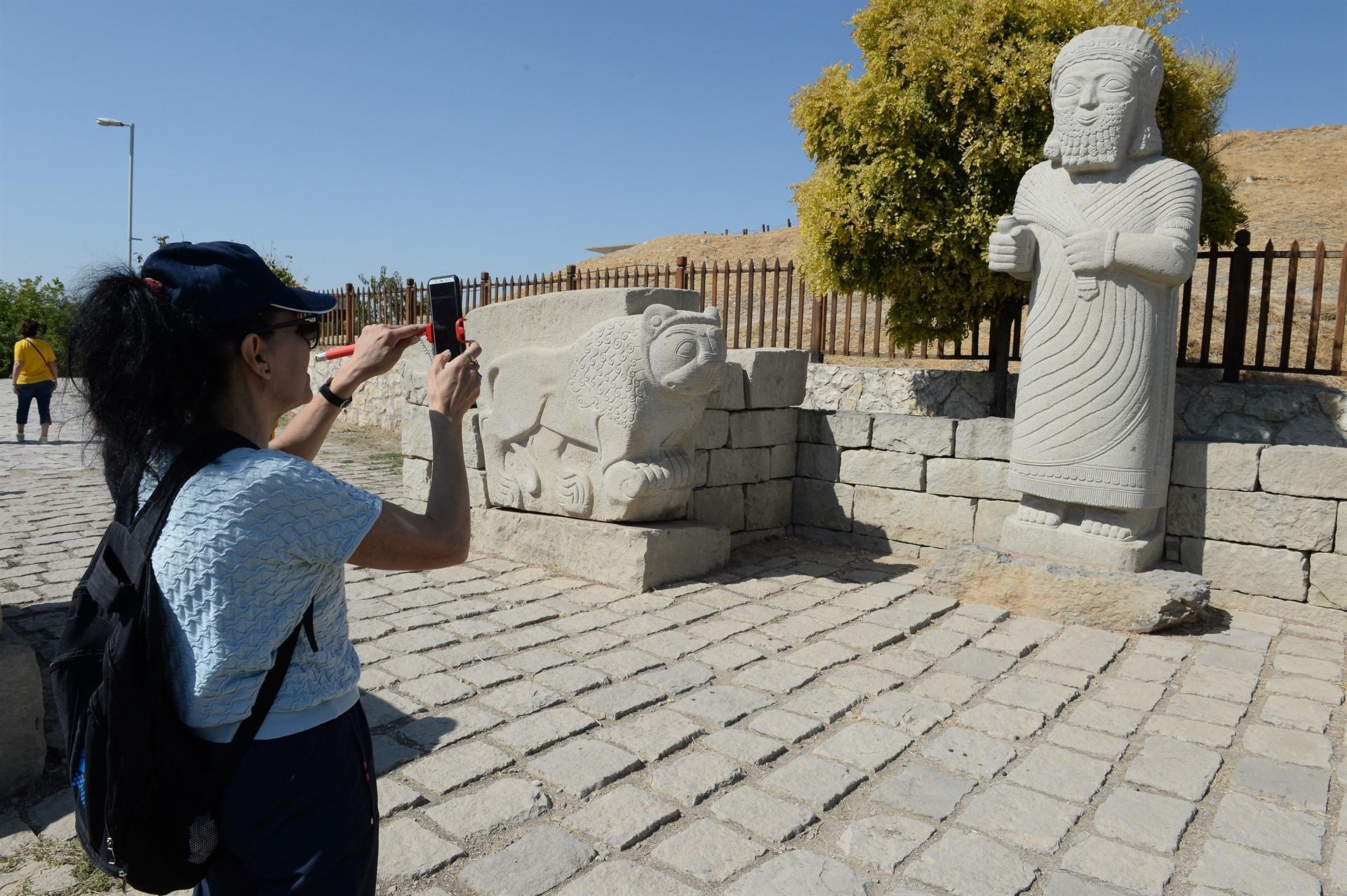
The head of the Arslantepe excavations, Professor Marcelle Frangipane said Arslantepe Mound, which is on the UNESCO World Heritage Tentative List, should be on the main list with its unique adobe palace and rich historical past.
Located seven kilometers from the eastern province of Malatya on the west bank of River Euphrates, Arslantepe is one of the historical sites that have embraced humankind for thousands of years thanks to its high agricultural potential, wetlands and structure protected from the floods of the river.
Arslantepe, which has existed in the historical process from the Late Chalcolithic Age to the Iron Age, carries traces of many civilizations from Hittites to Rome and Byzantium.
During archaeological excavations that have been carried out for 58 years, a lion and overthrown king statues dating back the late Hittite period have been unearthed at the entrance to the mound, which is home to the adobe palace and more than 2,000 seals.
In Arslantepe, which houses the traces of the early state system with its colorful figures and relief plates depicting the political power on its walls, many potteries, similar to those of Mesopotamia, are also among the findings unearthed in the excavations.
Excavations have been carried out by the University of Rome La Sapienza in Italy since 1961, and the findings reveal the transition to the central state system.
The adobe palace complex, the sealing system used in the distribution of food and the oldest swords ever found in the world show that the state system emerged here.
Works have been ongoing to include Arslantepe Mound, which is included in the UNESCO World Heritage Tentative List in 2014, on the permanent list.
Speaking to the state-run Anadolu Agency, Frangipane said works have been carried out for 58 years in the mound and that she has been there for 44 years.
Stating that they finished this year’s excavation season, Frangipane said, “We got very good results here. We find very important findings not only for Malatya but also for Turkey. The history here is too long. It starts at least 6,000 years ago. We know that because ceramic comes out; there are older layers underneath. Therefore, our work will continue. Here we know the 4th millennium B.C. very well; we know all chronology and history. There are also very important findings about this.”
At this year’s excavations, Frangipane stated that they found a skeleton that belonged to a child around the age of six or seven in the room of a residence on the western part of the mound. The presence of bracelets and necklaces made of small beads on his arms and neck indicates that the child belongs to an important family, she added.
She said that they also found ceramic pieces, mounds, cups and arrowheads in the mound and the work will continue next year.
Speaking of the importance of the mound, Frangipane said, “Arslantepe must be on the UNESCO because this palace is unique. There is no such protection in the world. The walls are two- to two-and-a-half meters high and have original plaster and paintings. We are protecting it, and now it is an open-air museum. Arslantepe is in the border area. In the past, there was connection with Mesopotamia, Caucasus and Central Anatolia. We found things like mussels this year, which means there was also connection to the sea. I have spent my life here; UNESCO will be like an award to me.”